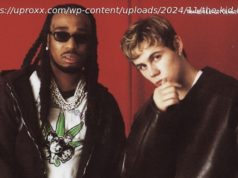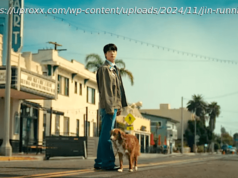Before the Coachella Valley Music & Arts Festival was born 20 years ago, stylistically diverse destination music festivals were largely a European thing.
Concert promoter Paul Tollett’s once stated hope for his bold new music gamble in the California desert couldn’t sound more prophetic.
“For Southern California,” he told The Times shortly before the first edition of the Coachella Valley Music & Arts Festival got under way Oct. 9,1999, “this could be the start of something really special.”
In fact, in the succeeding two decades, the event, for which two-day attendance first topped out around 50,000, has turned into the gold standard of pop music gatherings in the U. S.
That success was hardly assured. Tollett’s company, Goldenvoice, took a loss on Year One.
“I was there the night, on Sunday, when we all looked up, teary-eyed, and thought, ‘We’re never going to experience this again,’ ” says publicist Marcee Rondan of that first event. “We all knew what a financial hit it was.”
The 2019 edition will serve up closer to 160 acts over each of two three-day successive weekends at the Empire Polo Field in Indio, expecting to draw capacity crowds of 125,000 for each of those six days. The word “Coachella” itself has become shorthand for a tastemaker event.
There were more pragmatic questions in 1999: Would music fans trek to a 78-acre expanse in the Sonoran/Colorado Desert 130 miles east of Los Angeles to hear acts including Morrissey, Beck, Rage Against the Machine, Tool, Chemical Brothers, Moby and others who ranked high in the ‘90s among pop music’s cognoscenti? And would they pony up what felt like an exorbitant amount of money at the time: $50 per day.
There was little in the U. S. concert market at the time against which to measure it. Traveling festivals such as Lollapalooza, Vans Warped Tour, Lilith Fair were more the norm. Southern California rave culture offered another model, as did the Goldenvoice-promoted indie rock festival This Ain’t No Picnic.
A few months prior to the first Coachella, the Woodstock ‘99 festival made news after rock fans turned violent. Not coincidentally, the pace of advance ticket sales for Coachella suddenly plummeted.
Broad-based destination festivals were few and far between: There were the long-running Newport Jazz and Newport Folk festivals in Newport, R. I., as well as the quarter-century-old New Orleans Jazz & Heritage Festival, among the very few successful annual events in America.
One-off festivals on a grand scale included the Monterey Pop Festival in 1967; the Woodstock Music & Art Fair in upstate New York in 1969; the ill-fated Altamont free concert four months later at the Altamont Speedway in Northern California; the Summer Jam at Watkins Glen, N. Y., in 1973; California Jam in Ontario the following year and a sequel in 1978; the U. S. Festival in San Bernardino in 1982 and 1983.
But Americans seemed to prefer their live concerts in traditional settings: sports arenas, amphitheaters and stadiums, where lineups typically offered two, three or four acts at a time.
The multi-act, broad-based music festival was far more common in Europe in the ‘70s, ‘80s and ‘90s, when music — predominantly rock and the blues — gained the power to draw audiences on a massive scale.
In the wake of the 1969 Isle of Wight Festival, which drew approximately 150,000 rock fans to the town of Wootton, England, shortly after Woodstock had attracted even greater masses across the Atlantic, English music promoters went all in at annual events such as the Reading, Leeds, and Glastonbury music festivals.






